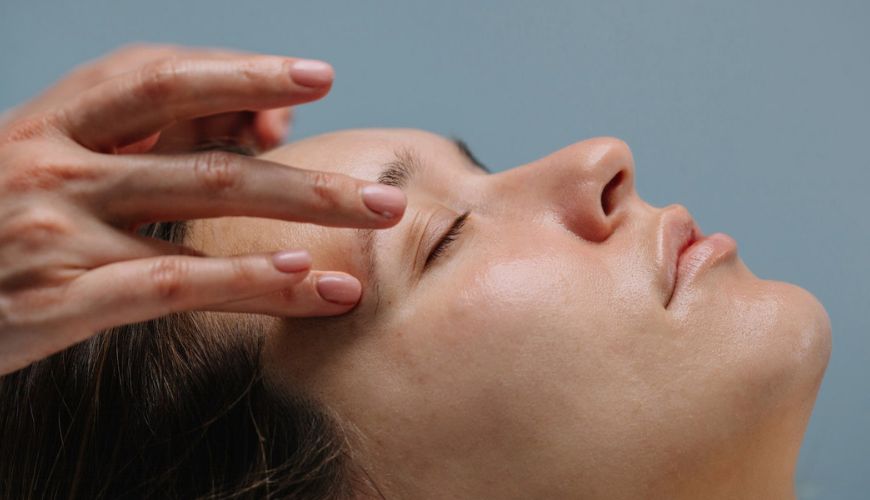Radiofrequency, Chemical Peels, And More Ways To Upgrade Your Microneedling Treatment
[email protected] | July 28, 23

Microneedling is one of those treatments that enjoys serious mass appeal, likely because it can handle improving the appearance of almost everything, from crow’s feet to acne scars. The secret? Damage your skin, but just a little. “Microneedling stimulates collagen production using small, sterile needles,” says Tania Peters, MD, a board-certified dermatologist in Washington, DC. These tiny needles create microscopic injuries within skin, which trigger the body’s healing reaction — ergo a bump in collagen production.
Its popularity also likely has to do with its exact method of injury. “What’s great about microneedling is that it doesn’t have heat and it doesn’t have a laser,” explains Kate Zibilich Holcomb, MD, a board-certified dermatologist in New Orleans, Louisiana. “That allows us to treat multiple skin types, including very dark-skinned patients.” On top of that, its small, pen-like tip allows it to treat smaller areas, such as around the eyes, too.
While microneedling alone is pretty powerful, it can also be paired with other treatments to maximize its benefits. (Exhibit A: Morpheus8TM — but we’ll get to that later.) From chemical peels to radiofrequency, the right combination can amplify its effects and turn it into an even more targeted procedure. Here, some derm-approved pairings and what they can do for your skin.
EDITOR’S NOTE: As always, talk to your doctor before starting any new treatment.
The Addition: Radiofrequency, Such As Morpheus8
What It’s Good for: Improving skin texture
Why It Works: While microneedling uses needles to spur collagen production, “radiofrequency produces heat in the treatment area,” says Dr. Peters. “This heat further stimulates new collagen.” In doing so, radiofrequency can tighten and remodel the tissue to smooth out wrinkles and scars alike. For that reason, microneedling RF tends to best for those over 40, says Dr. Holcomb, although it depends on the patient. (For those under 40, microneedling alone usually does the trick.) The only exception is if you’re trying to improve more stubborn conditions, like acne scars, stretch marks, and general scarring — in that case, microneedling RF may be your best bet whatever your age. Ask your doctor about devices like Morpheus8, which has radiofrequency built-in to boost its collagen-production power.
The Addition: Pulsed Dye Lasers
What They’re Good For: Reducing redness
Why They Work: While microneedling can help with textural issues, it’s not quite as good at targeting discoloration. For those who have redness — typically from rosacea or acne — getting a vascular laser to address broken capillaries and other forms of redness in the weeks prior to microneedling may have a benefit. “We’re often doing vascular lasers to break up broken blood vessels, help with overall redness, and to help with redness from acne scarring,” Dr. Holcombe says. So, lasering and then microneedling once you have healed can have more thorough results. The only consideration is that the laser may extend the downtime, which is usually minimal with microneedling.
The Addition: Skin Resurfacing Treatments
What They’re Good For: Helping to clear pores
Why They Work: Microneedling isn’t the greatest addition for congested pores, since it could potentially spread any bacteria and gunk that could potentially lead to breakouts and even more clogs. For that reason, Dr. Peters will often prep skin with a resurfacing treatment, such as DiamondGlowTM, to help clear out pores a week or two before microneedling. “Some patients will even do a series of these [in the weeks] prior to microneedling,” says Dr. Peters. “These treatments help to remove dirt, oils, dead cells, and improve clogged pores.”
The Addition: Chemical Peels
What They’re Good For: Improving acne scars and dark spots
Why They Work: Anyone who’s had a breakout can attest to the scars and dark spots acne can leave in its wake. That is where chemical peels can shine, particularly when combined with other treatments. “Alternating between chemical peels and microneedling can help improve both skin tone and skin texture,” says Dr. Peters. In her office, she’ll usually alternate three or four chemical peel treatments with microneedling sessions over several weeks in order to even out skin tone.
DiamondGlowTM is an Allergan®-owned treatment.
Uses
The DiamondGlowTM device is a general dermabrasion device that gently removes the top layer of skin and delivers topical cosmetic serums onto the skin.
Important Safety Information
The DiamondGlowTM treatment is not for everyone. You should not have a DiamondGlowTM treatment if you have compromised skin quality. Tell your provider if you are pregnant or lactating, or if you have any medical conditions, including allergies, and if you are using topical medications on the area to be treated.
Typical side effects include a scratchy, stinging sensation during the treatment and temporary tightness, redness or slight swelling after the treatment. Rare serious side effects may also occur and include severe skin irritation and allergic reactions.
SkinMedica® Pro-Infusion Serums Disclaimer
SkinMedica® Pro-Infusion Serums are intended to meet the FDA’s definition of a cosmetic product, an article applied to the human body to cleanse, beautify, promote attractiveness, and alter appearances. These products are not intended to be drugs that diagnose, treat, cure, or prevent any disease or condition. These products have not been approved by the FDA and the statements have not been evaluated by the FDA.
Please talk to your provider for additional information.






